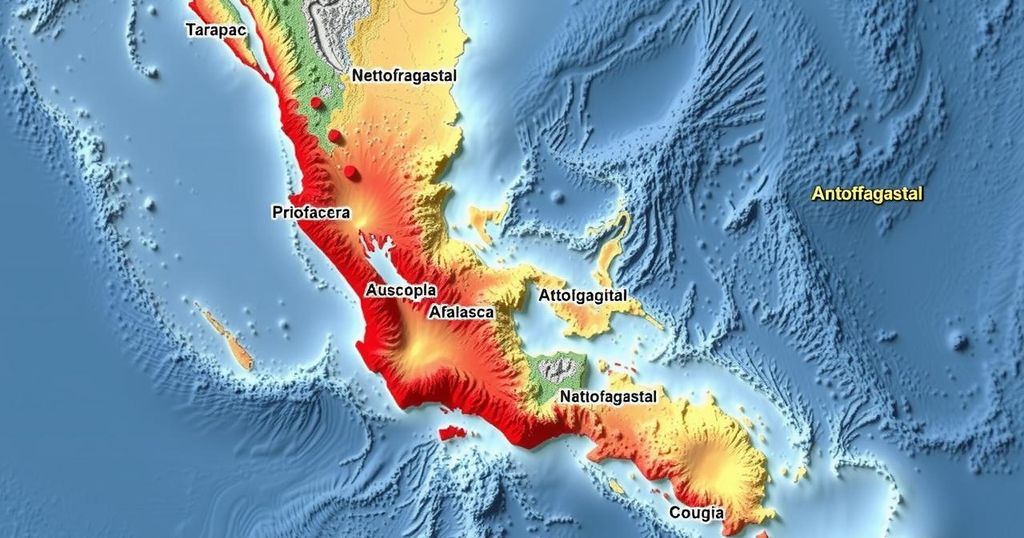Significant M6.1 Earthquake Strikes Tarapaca-Antofagasta Border Region of Chile

A 6.1 magnitude earthquake struck the Tarapaca-Antofagasta border in Chile on January 2, 2025, causing moderate to light shaking felt by many. Notably, the earthquake occurred at depths between 91 to 99 km. With a Green alert issued, the likelihood of serious casualties and damage appears low, although some vulnerable structures remain in the region.
On January 2, 2025, a significant earthquake measuring M6.1 struck the Tarapaca-Antofagasta border region of Chile at approximately 20:43 UTC. The United States Geological Survey (USGS) reported a depth of 99 km (approximately 61 miles), while the European-Mediterranean Seismological Centre (EMSC) noted a slightly shallower depth of 91 km (around 56 miles). The earthquake’s epicenter was identified to be located 85 km (53 miles) NNW of Calama, with a population of 143,084, and 118 km (74 miles) ENE of Tocopilla, which has a population of 24,460. An estimated 169,000 individuals perceived moderate shaking, while 442,000 experienced light tremors.
The USGS has issued a Green alert indicating a low likelihood of fatalities and damage due to this seismic event. Structures in the affected area are primarily designed to withstand such shaking effects; however, certain vulnerable structures, particularly those constructed from adobe and rubble or field-stone masonry, remain a concern. In recent years, the region has witnessed secondary hazards, such as landslides caused by previous seismic occurrences, which may have aggravated losses in affected areas. The population density and building designs are contributing factors to the region’s resilience against potential earthquake impacts.
Chile is one of the most seismically active regions in the world, primarily due to the convergence of the Nazca and South American tectonic plates. The Tarapaca-Antofagasta border region has experienced various seismic activities in the past, which have shaped local preparedness and response measures. Buildings constructed in this area often incorporate earthquake-resistance features, although older structures may pose risks. Understanding the history and geological dynamics of this region is crucial for interpreting the effects of significant seismic events.
In summary, the M6.1 earthquake on January 2, 2025, has impacted the Tarapaca-Antofagasta border region of Chile, with moderate to light shaking felt across the population. While the infrastructure largely remains resilient to earthquakes, the presence of vulnerable building types highlights ongoing risks. Overall, the low alert level suggests that, despite the seismic activity, the potential for substantial casualties and damage remains minimal, underscoring the importance of continued vigilance and preparedness in earthquake-prone areas.
Original Source: watchers.news








